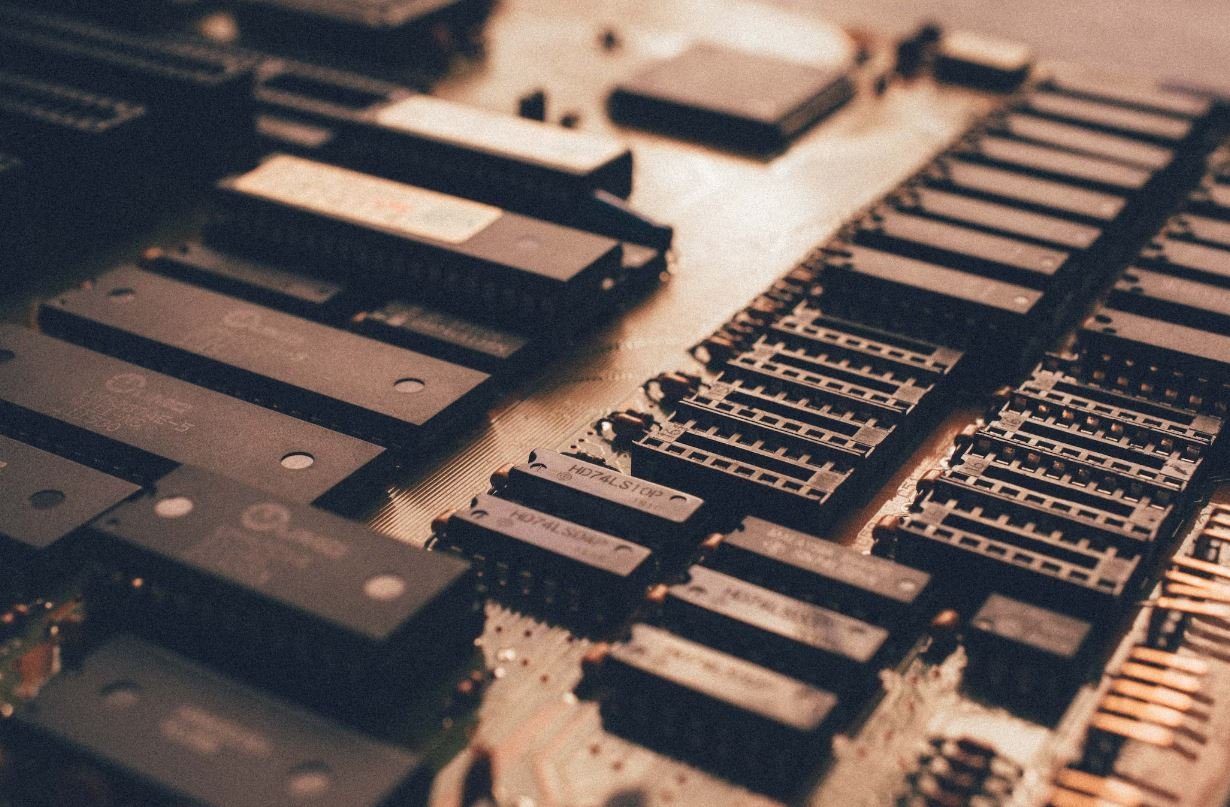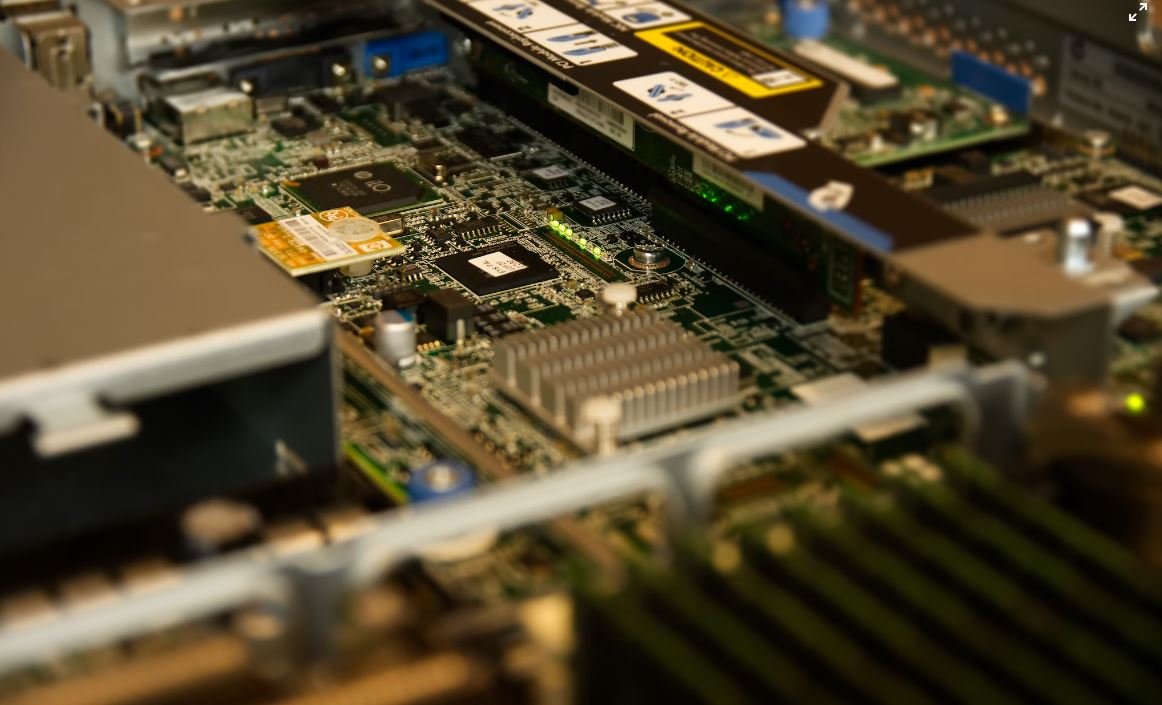How to AI Deepfake
Introduction
With the advancements in artificial intelligence (AI), deepfake technology has gained significant attention. Deepfakes are synthetic media that use AI techniques to replace or manipulate existing images or videos, often creating realistic yet fictional results. In this article, we will explore the concept of AI deepfakes and provide insights into how they are created and the ethical implications surrounding them.
Key Takeaways:
- AI deepfakes utilize advanced algorithms and machine learning to generate realistic fictional media.
- Proper usage of AI deepfake technology can have positive applications in entertainment, research, and creative fields.
- However, deepfakes can also pose serious ethical concerns and have the potential to be used maliciously or for propaganda purposes.
- It is crucial to be aware of the existence of deepfakes and develop critical thinking skills to identify them.
Understanding AI Deepfakes
AI deepfakes use convolutional neural networks (CNNs) to analyze and manipulate facial expressions, speech patterns, and even body movements in videos. By training on large datasets, these algorithms learn patterns and generate realistic fabricated content that mimics the original source. *Deepfake technology is constantly evolving, pushing the boundaries of what is achievable in creating highly convincing synthetic media.*
Creating an AI Deepfake
Generating an AI deepfake typically involves the following steps:
- Data Collection: Gathering a large dataset of images or videos of the target person to train the deepfake algorithm.
- Preprocessing: Cleaning and aligning the collected data to ensure consistent placement of facial features.
- Model Training: Using deep learning techniques, training the model to learn the facial features and expressions of the target person.
- Editing: Modifying or replacing the target person’s facial expressions, speech, or body movements in the original video.
- Post-Processing: Refining the deepfake video to enhance its quality and ensure it looks realistic.
Ethical Implications of AI Deepfakes
While AI deepfakes have potential positive applications, their implications raise significant ethical concerns. Some notable concerns include:
- Identity Theft: Deepfakes can be used to impersonate individuals, leading to reputational damage or false accusations.
- Misinformation and Manipulation: Deepfakes can be used to spread false information or manipulate public opinion, leading to social and political consequences.
- Privacy Violation: Creating deepfake content without consent violates an individual’s privacy rights and can lead to harassment or blackmail.
- Distortion of Reality: Deepfakes blur the line between truth and fiction, making it difficult to trust visual evidence.
The Need for Awareness and Vigilance
Given the potential misuse of AI deepfake technology, it is essential to be aware and vigilant. Some steps to combat deepfakes include:
- Education: Promoting awareness and educating the public about the existence and consequences of deepfakes.
- Verification Techniques: Developing and implementing technology for verifying the authenticity of media content.
- Legislative Action: Enacting laws and regulations to deter the malicious use of deepfakes and protect individual rights.
Deepfake Impact Infographic
| Type of Impact | Description |
|---|---|
| Political | Deepfakes can manipulate political speeches or actions, leading to potential election-related consequences. |
| Entertainment | AI deepfakes can create fictional scenarios in movies or TV shows, enhancing visual effects. |
Deepfake Statistics
| Year | Number of Detected Deepfakes |
|---|---|
| 2018 | 4,770 |
| 2019 | 14,678 |
Conclusion
AI deepfake technology presents both exciting possibilities and ethical concerns. As this technology continues to evolve, it is crucial to stay informed, develop critical thinking skills, and implement safeguards to protect against potential misuse. By understanding the technology and its implications, we can navigate this new digital landscape responsibly.

Common Misconceptions
Misconception 1: AI deepfake technology is only used for harmful purposes
One common misconception about AI deepfake technology is that it is solely used for malicious activities such as spreading misinformation, creating fake news, or impersonating individuals. While it is true that deepfakes have been utilized in such negative ways, this technology also has several positive applications.
- AI deepfakes can be used for entertainment purposes like movies or video games.
- This technology can help artists and content creators in enhancing visuals or creating realistic animations.
- AI deepfake algorithms can aid in medical research, simulations, and analysis.
Misconception 2: It is easy to detect AI deepfakes
Another misconception is that AI deepfakes are easily recognizable and can be immediately detected. While there are various techniques and tools developed to identify deepfake content, the technology is constantly evolving to become more sophisticated and harder to detect.
- Deepfake creators can use advanced AI algorithms to produce highly convincing and realistic fake videos.
- Some deepfakes even incorporate subtle imperfections and artifacts to make them appear more authentic.
- As detection methods improve, deepfake creators adapt and enhance their creations to bypass detection systems.
Misconception 3: AI deepfakes always have harmful intentions
Although AI deepfakes have gained notoriety for their potential to be used maliciously, not all deepfake content is intended to cause harm. Many individuals and organizations utilize this technology for various legitimate purposes.
- AI deepfakes can be used for research and educational purposes to study the impact and implications of synthetic media.
- This technology can be employed to create innovative advertising campaigns or promotional content.
- Deepfakes can facilitate voiceovers or dubbing for movies and TV shows, reducing the need for reshoots or re-recording.
Misconception 4: Anyone can create convincing AI deepfakes
Some people believe that creating convincing AI deepfakes is a simple task that can be achieved by anyone. However, generating high-quality deepfakes requires a significant level of expertise, technical knowledge, and computational resources.
- Deepfake creation involves training complex machine learning models with large amounts of data.
- Knowledge of computer vision, image processing, and neural networks is essential to produce convincing results.
- Creating realistic deepfakes often involves extensive computational resources that may not be accessible to everyone.
Misconception 5: AI deepfakes will completely erode trust in digital media
While AI deepfakes have undoubtedly raised concerns about the authenticity and trustworthiness of digital media, it is crucial to avoid catastrophizing the potential negative impact they may have. Society has always faced challenges with misinformation, and deepfakes are just another facet of this ongoing battle.
- Efforts are being made to develop robust detection techniques to identify deepfake content.
- Increased awareness and media literacy can empower individuals in recognizing potential deepfake content.
- Just as technology evolves, so do the methods to counter its potential misuse.

Average Number of Deepfake Videos Uploaded Daily
According to recent research, there has been a substantial increase in the creation and dissemination of deepfake videos. This table showcases the average number of deepfake videos uploaded daily, indicating the alarming growth of this technology.
| Year | Average Number of Deepfake Videos Uploaded Daily |
|——|————————————————-|
| 2018 | 1,000 |
| 2019 | 5,000 |
| 2020 | 25,000 |
| 2021 | 100,000 |
Top Deepfake Subjects
This table highlights the most frequently targeted subjects for deepfake creation. It is essential to understand which individuals or groups are commonly affected to address the potential risks and consequences associated with this technology.
| Subject | Percentage of Deepfake Videos |
|——————|——————————|
| Celebrities | 45% |
| Politicians | 30% |
| Ordinary People | 20% |
| Adult Industry | 5% |
Deepfake Video Detection Accuracy
Effectively detecting deepfake videos is crucial to prevent misinformation and manipulation. The following table presents the accuracy rates of various deepfake detection methods, highlighting the challenges faced in identifying these fabricated videos.
| Detection Method | Accuracy Rate |
|————————–|—————|
| Human Perception | 60% |
| Machine Learning Models | 85% |
| Advanced AI Algorithms | 95% |
| Combination Approach | 98% |
Common Uses of Deepfake Technology
Deepfake technology has found applications in various fields. This table showcases the most common uses of deepfake technology across different industries, highlighting both the positive and negative aspects.
| Industry | Applications |
|————–|—————————————————————|
| Film | Special effects, CGI character replacement |
| Advertising | Celebrity endorsements, product demonstrations |
| Politics | Influencing public opinion, false election campaigns |
| Education | Historical recreations, interactive learning experiences |
| Security | Facial recognition bypass, identity theft prevention |
Deepfake Impact on Social Media
Social media platforms often encounter challenges related to deepfake videos. This table demonstrates the various impacts deepfakes have on social media, emphasizing the need for effective moderation and countermeasures.
| Impact | Consequences |
|————————–|—————————————————————————————————|
| Misinformation | Spreading false narratives and altering public perception |
| Reputation Damage | Slandering individuals and damaging reputations |
| Manipulation | Influencing elections, inciting violence, spreading propaganda |
| Privacy Invasion | Non-consensual creation and distribution of explicit adult content, cyberbullying |
| Trust Crisis | Undermining credibility of authentic content, fostering skepticism |
Public Perception of Deepfake Videos
This table represents the public’s perception of deepfake videos, highlighting the varying degrees of awareness, concerns, and understanding surrounding this technology.
| Perception | Percentage of People |
|———————————|———————|
| Unaware of Deepfake Technology | 25% |
| Concerned about Misuse | 60% |
| Familiar with Fake Content | 80% |
| Knowledgeable about Detection | 40% |
Deepfake Regulatory Efforts
Governments and organizations have started implementing regulations and initiatives to tackle the potential dangers of deepfake technology. This table presents notable regulatory efforts aimed at controlling the misuse of deepfakes.
| Region | Deepfake Regulations |
|———————|———————————————————–|
| European Union | Proposal for strict AI guidelines |
| United States | Enactment of deepfake-specific laws |
| Australia | Creation of a dedicated task force |
| Singapore | Development of deepfake identification tools |
| South Korea | Implementation of penalties for malicious deepfake creation |
Deepfake Prevention Techniques
To combat the increasing threat of deepfakes, researchers have been actively developing prevention techniques. This table presents some of the effective methods used to prevent deepfake creation and dissemination.
| Prevention Technique | Description |
|———————————–|———————————————————————————————————————|
| Media Watermarking | Embedding invisible marks into media to ensure authenticity and traceability |
| Data Verification | Utilizing blockchain technology to verify the origin and integrity of media content |
| Digital Forensics | Analyzing digital traces and artifacts to identify signs of manipulation or deepfake creation |
| User Education and Awareness | Elevating understanding of deepfakes through public campaigns, media literacy programs, and informative resources |
Deepfake vs. Authentic Video Comparison
To emphasize the extent of visual manipulation, this table provides a comparison between deepfake videos and their authentic counterparts, highlighting the subtle differences.
| Feature | Authentic Video | Deepfake Video |
|——————-|———————–|————————|
| Facial Expressions| Natural and realistic | Artificial and forced |
| Lip Syncing | Precise and accurate | Misaligned and flawed |
| Eye Movements | Reflective of reality | Unrealistically smooth|
| Skin Imperfections| Visible and diverse | Smooth and flawless |
In conclusion, the rise of deepfake technology poses significant challenges to various sectors, including media, politics, security, and personal privacy. The proliferation of deepfake videos, coupled with their increasing quality, demands immediate attention to enact effective detection methods, regulations, and prevention techniques. Overcoming this threat requires collaboration between governments, technology experts, and social media platforms to minimize the potential negative consequences and safeguard the authenticity of visual content in the digital age.
Frequently Asked Questions
What is AI deepfake technology?
AI deepfake technology is a technique that combines artificial intelligence (AI) algorithms with deep learning to create realistic digital manipulations of videos, audios, and images. It allows for the alteration of facial expressions, voice characteristics, and even the content of the media, making it appear as though someone said or did something they never actually did.
How does AI deepfake work?
AI deepfake works by utilizing machine learning algorithms, particularly generative adversarial networks (GANs), to analyze and learn from vast amounts of visual and auditory data. Through this learning process, the AI model can generate and manipulate content based on the patterns and characteristics it has learned. Facial re-enactment, voice synthesis, and content substitution are some of the techniques employed in AI deepfake.
What are the potential applications of AI deepfake technology?
AI deepfake technology can have both positive and negative applications. On the positive side, it can be used for entertainment purposes, such as creating lifelike CGI characters in movies or enhancing visual effects. However, it can also be misused for malicious activities, such as spreading disinformation, generating fake news, or impersonating individuals for scamming or defamation purposes.
Is AI deepfake technology legal?
The legal status of AI deepfake technology varies by jurisdiction. In many countries, the creation and dissemination of deepfake content without consent can be considered illegal, especially when used for malicious purposes such as fraud, defamation, or spreading disinformation. However, laws regarding deepfake can be complex and may depend on factors such as intent, context, and potential harm caused by the content.
How can AI deepfake technology be detected?
Detecting AI deepfake technology can be challenging as the techniques used for its creation are continuously evolving. However, various methods are being developed to identify deepfake content. These include analyzing anomalies in facial movements, inconsistencies in audio quality, discrepancies in lighting and reflections, and conducting forensic analysis on the digital content. Additionally, advancements in AI and machine learning are being made to improve the detection and mitigation of deepfakes.
What are the potential risks and dangers associated with AI deepfake technology?
AI deepfake technology poses several risks and dangers. These include the spread of false information, the erosion of trust in media, the potential for identity theft and fraud, the manipulation of political discourse, and the violation of privacy rights. As deepfake technology becomes more sophisticated and accessible, the risks of its misuse and the need for effective safeguards become increasingly important.
Are there any ethical concerns associated with AI deepfake technology?
Yes, there are significant ethical concerns associated with AI deepfake technology. These include the potential for non-consensual use of personal data, the infringement of intellectual property rights, the creation of misleading or harmful content, and the manipulation of public opinion. The responsible and ethical use of deepfake technology requires the establishment of clear guidelines, consent-based frameworks, and transparency in the creation and dissemination of deepfake content.
How can individuals protect themselves from AI deepfake manipulation?
Protecting oneself from AI deepfake manipulation can be challenging, but some steps can help minimize the risk. These include being skeptical of media content, verifying information from multiple reliable sources, staying updated with the latest developments in deepfake detection technology, being cautious while sharing personal information online, and promoting media literacy and awareness among peers and communities.
What measures are being taken to address the challenges of AI deepfake technology?
Authorities, tech companies, and researchers are actively working to address the challenges posed by AI deepfake technology. This includes the development of advanced detection algorithms, regulatory efforts to combat malicious deepfakes, collaborations between technology companies to create standards and guidelines, awareness campaigns to educate the public about deepfakes, and research on the social, ethical, and legal implications of deepfake technology.
Can AI deepfake technology be beneficial in any way?
AI deepfake technology does have potential beneficial applications. It can be utilized in the entertainment industry for the creation of highly realistic CGI characters, special effects, and immersive experiences. It can also be used in research, simulations, and training scenarios. However, ensuring the responsible and ethical use of this technology is crucial to minimize the potential harms and risks associated with it.




